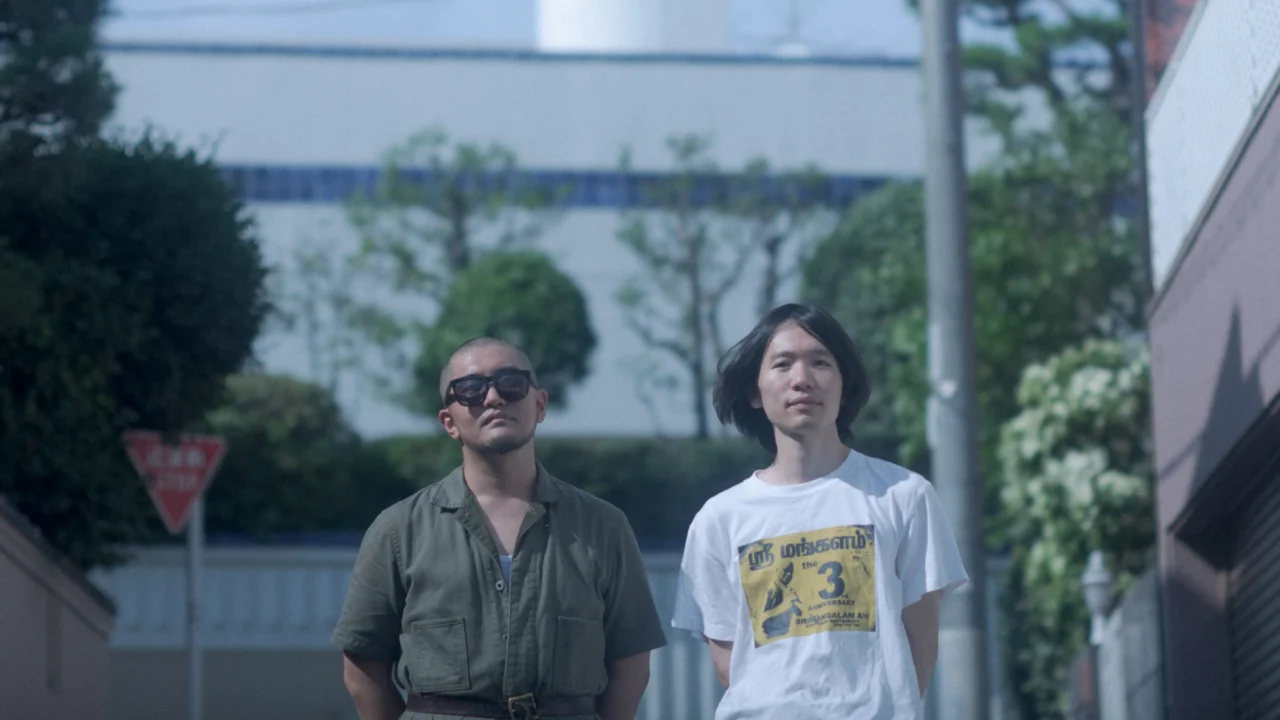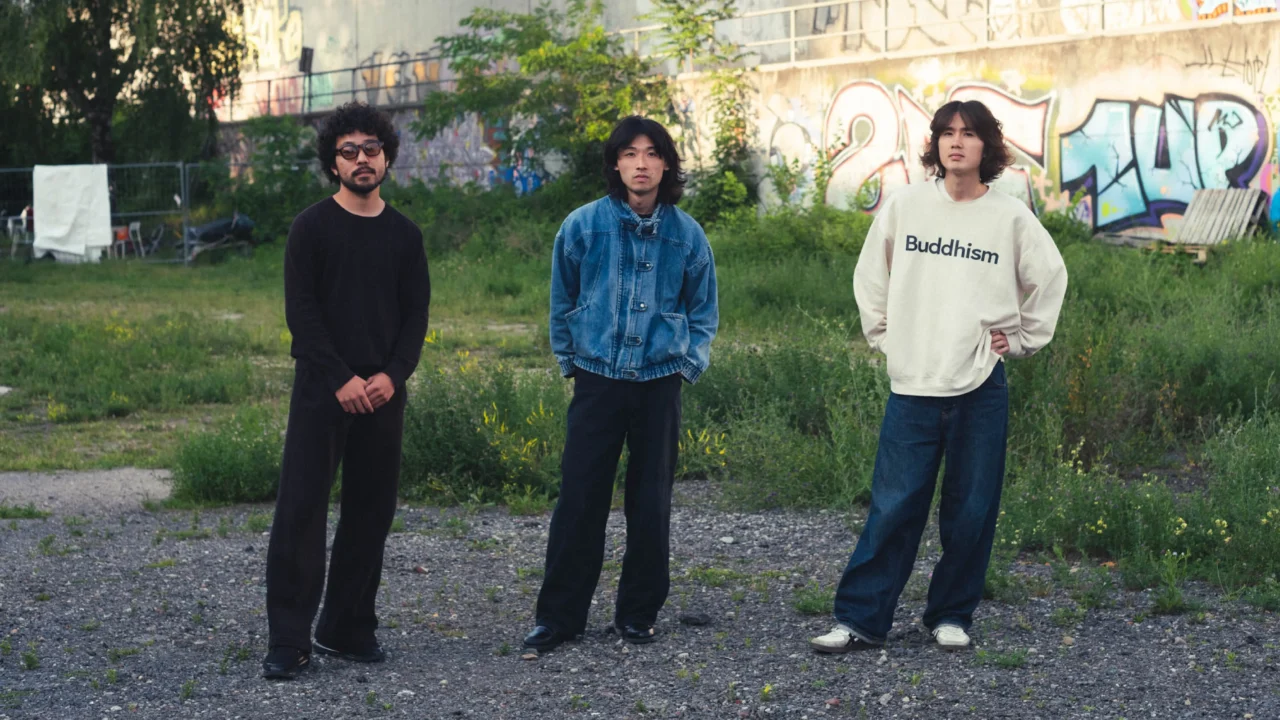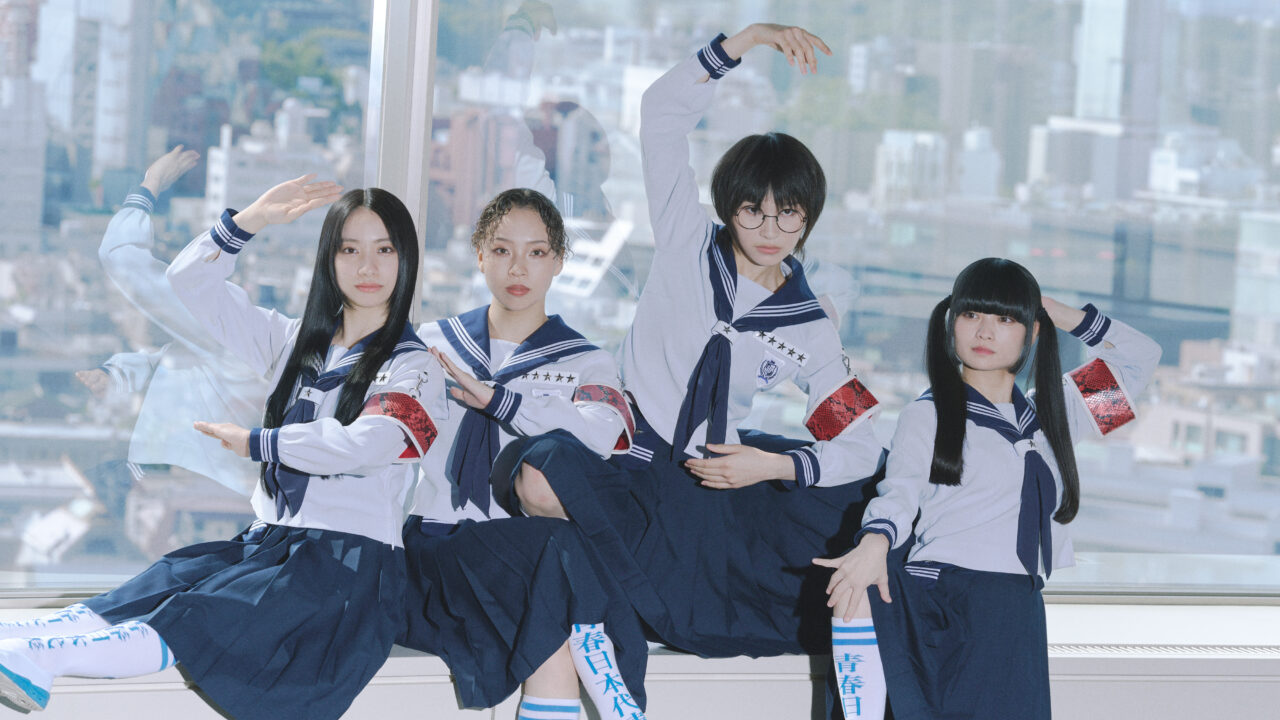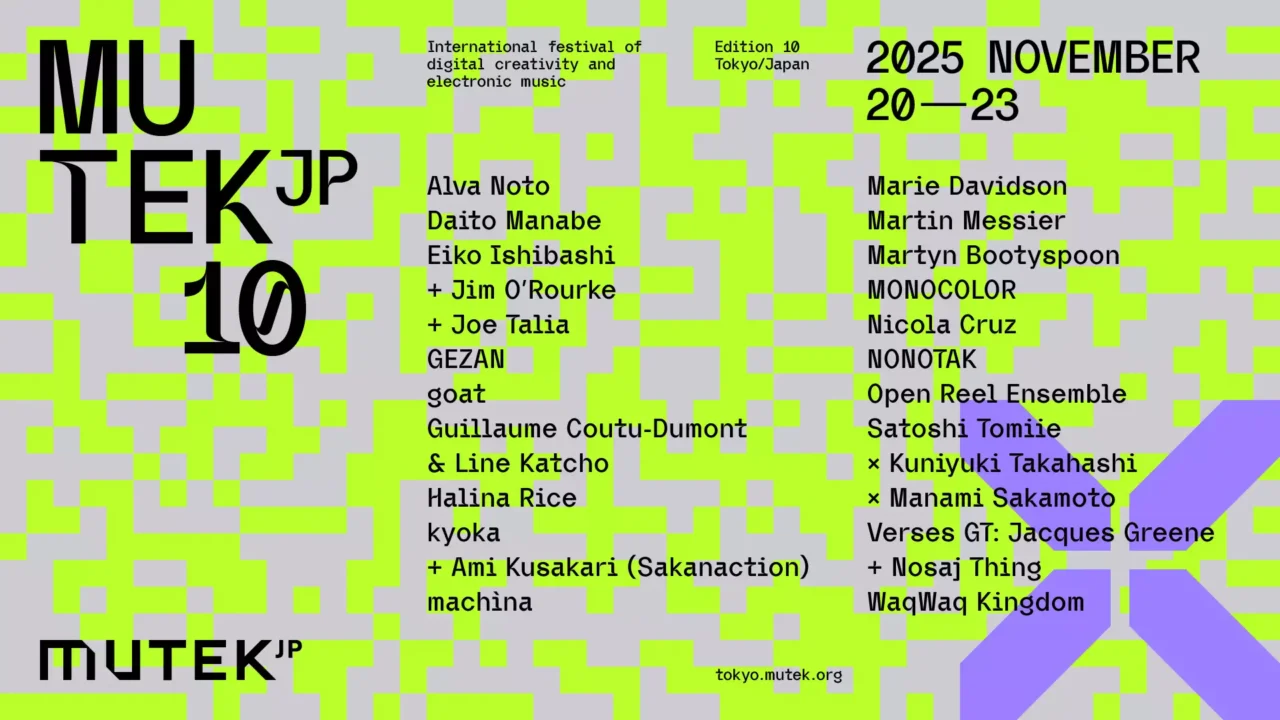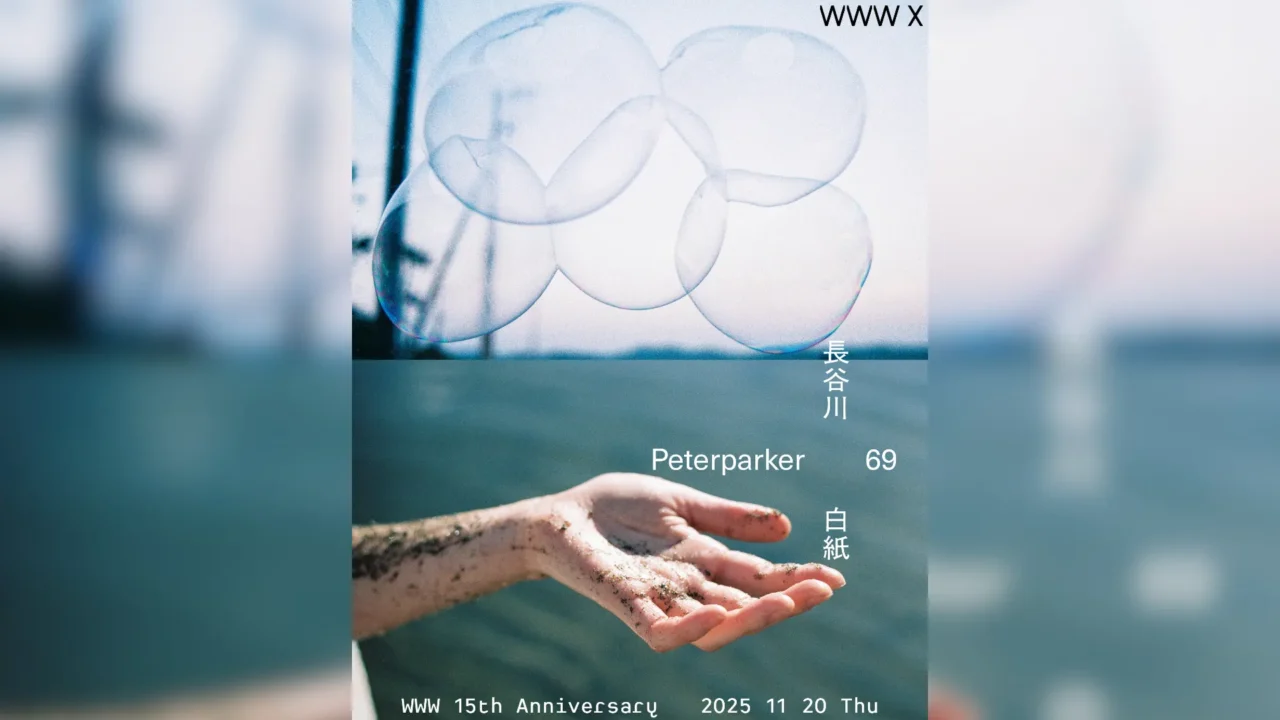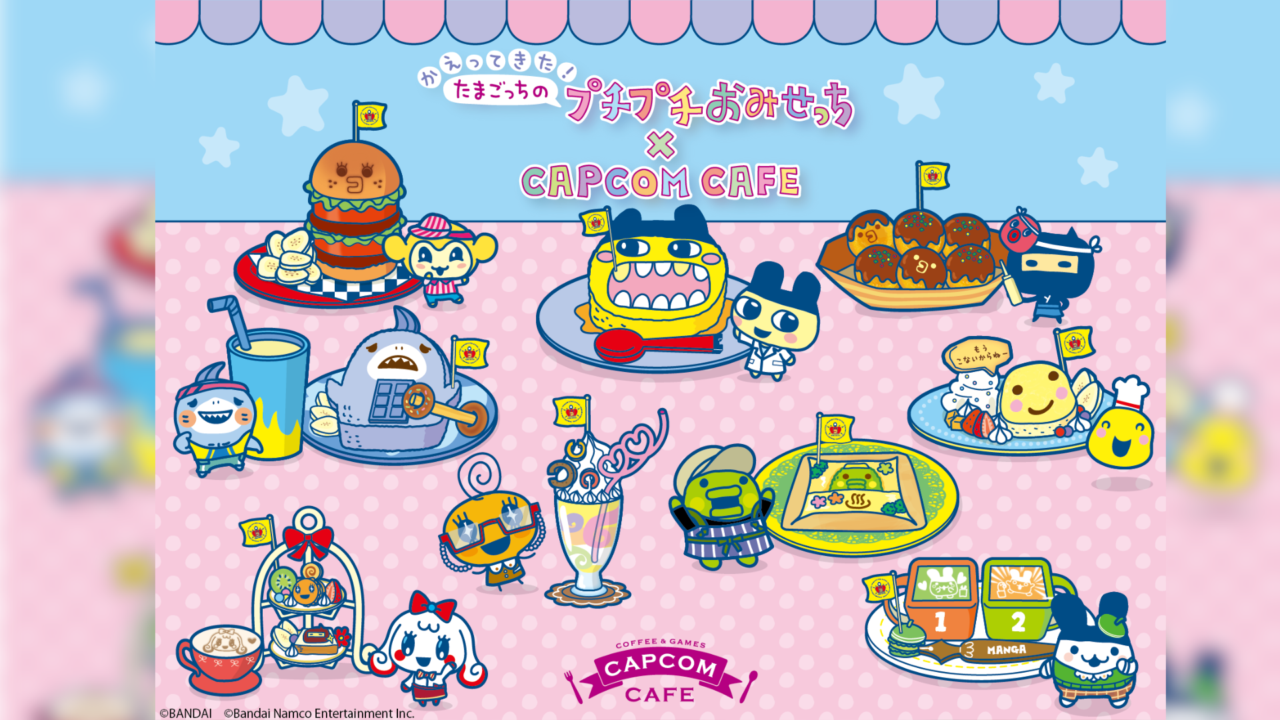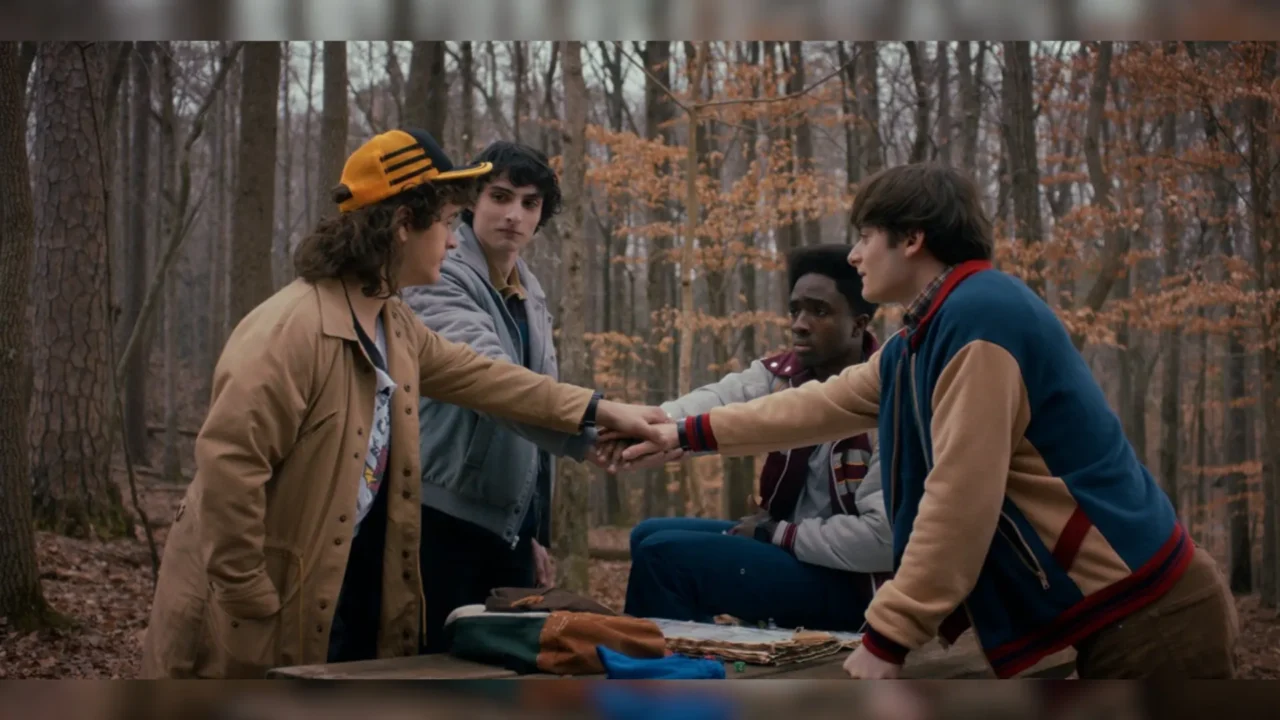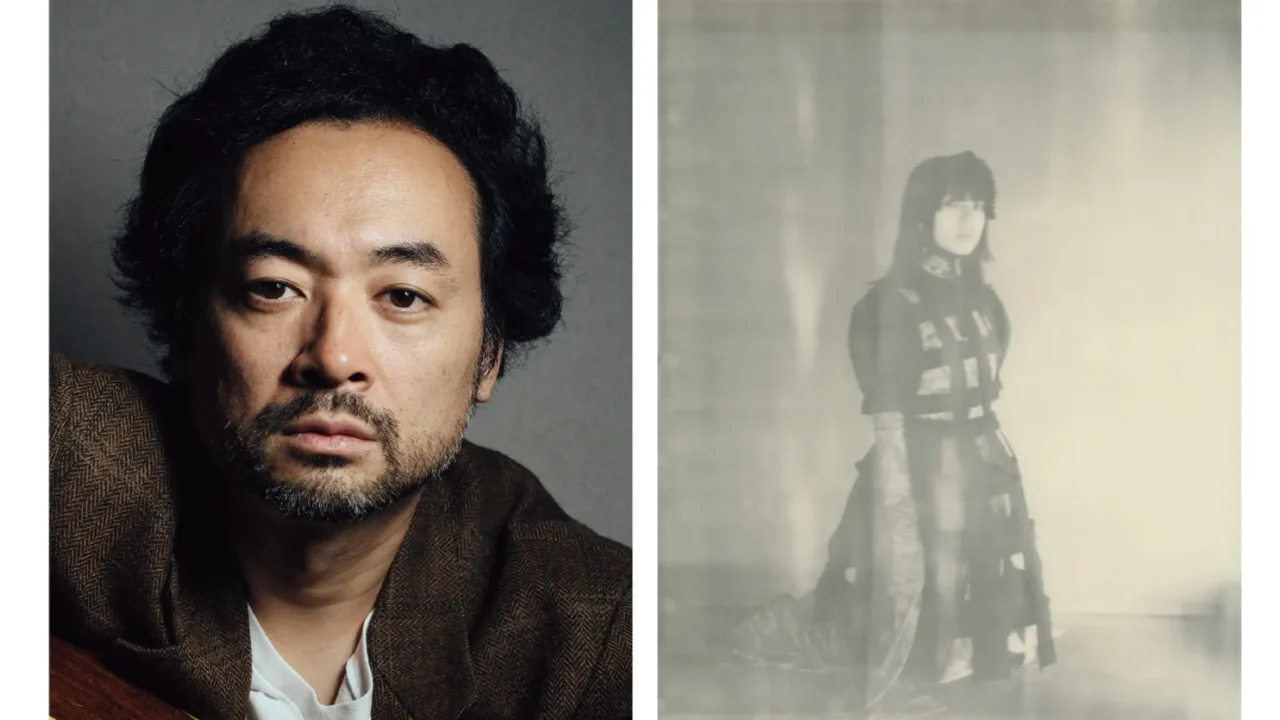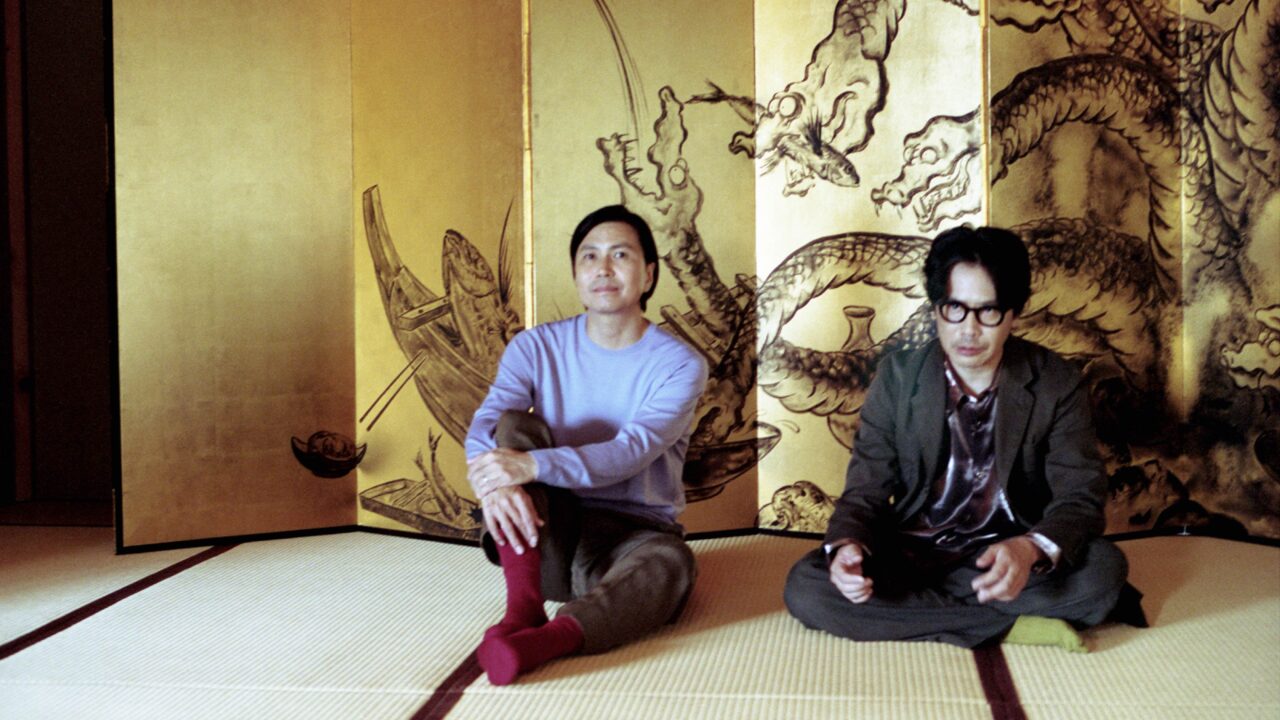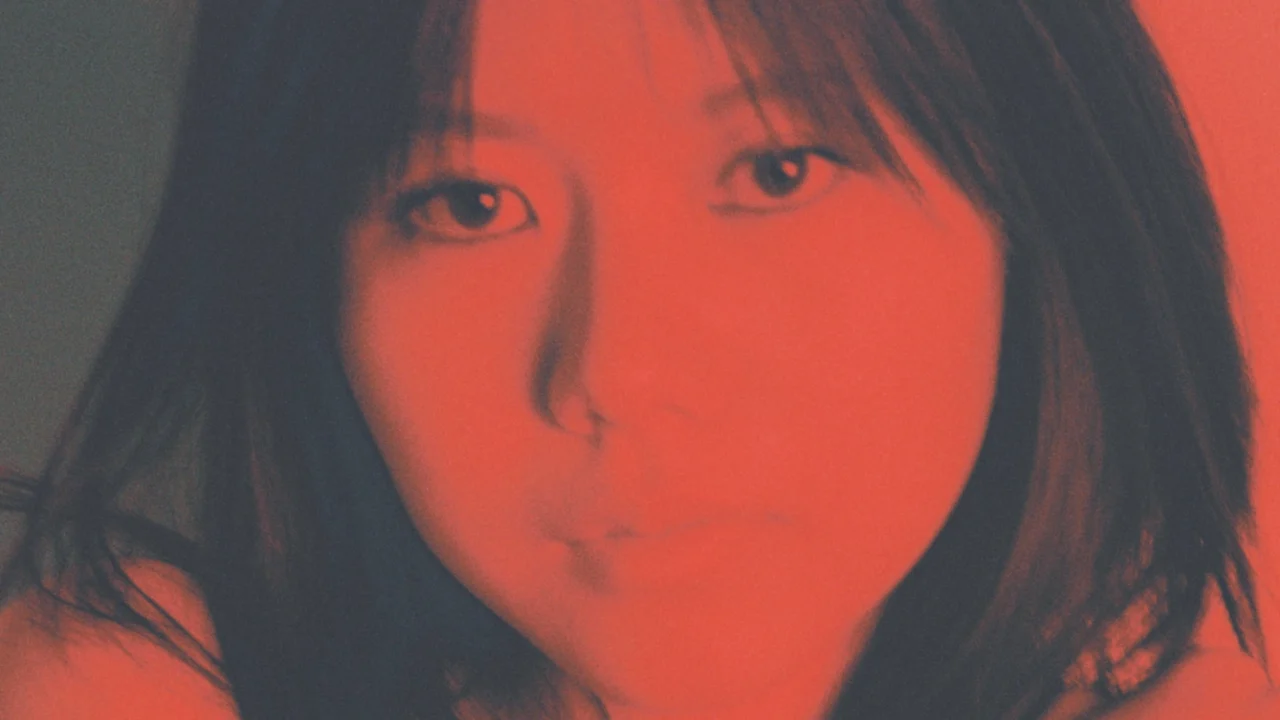It was a day that could only have happened in Yamagata. In May, the historic Bunsyōkan became the setting for a one-off performance by Manami Kakudo and her band—a live event born not from a tour schedule, but from the quiet connections she’s nurtured with local creators. Capturing the atmosphere of this deeply rooted collaboration is Yamagata-based writer imdkm.
INDEX
At the Heart of Yamagata’s Cultural Heritage: Manami Kakudo at Bunsyōkan
Manami Kakudo is coming to Yamagata. And with a full band set. And at Bunsyōkan. After touring Yamaguchi, Kyoto, Onomichi, Fukuoka, and Nagasaki, plus a four-city tour in China and a show in Tokyo, Yamagata has now been added to the “Contact” album tour.
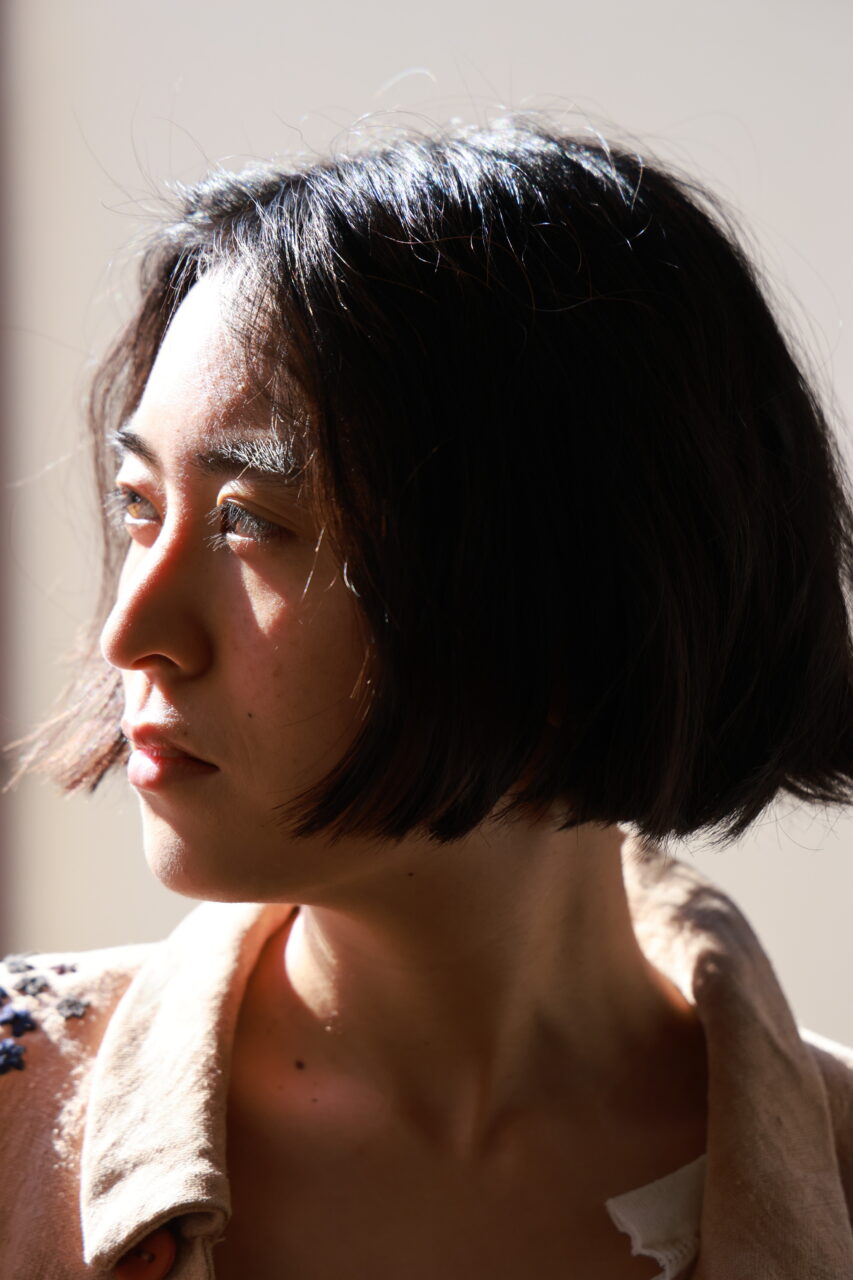
Manami Kakudo is a versatile musician and percussionist from Nagasaki Prefecture, raised amid mountains and rivers. She creates and performs using a wide range of percussion instruments—including the marimba—along with her voice, words, and everyday objects. Beyond her solo career, Kakudo has contributed live support and recordings for artists such as cero, Tomoyo Harada, Hikari Mitsushima, dip in the pool, and Taikū Jikan. She also composes music for films, theater, dance, and art installations. In 2022, she released “Yodaka,” the theme song for the film Yodaka no Kataomoi. Her latest solo album, Contact, was released in January 2024, marking her first solo release in four years.
The venue for Contact × Yamagata, Bunsyōkan, is officially known as the Yamagata Prefectural Folk Museum and was formerly the prefectural government office—a magnificent historic building. While it is designated as an Important Cultural Property of Japan and serves as a popular tourist spot, the plaza on the grounds is also a beloved gathering place for local residents, and the building itself is frequently used for various events. In fact, on the afternoon of the live day when I arrived too early, a local mikoshi (portable shrine) was resting in the plaza. Sitting on a bench with a coffee in hand, surrounded by people wearing traditional happi coats and spectators watching the scene, I felt a strange but wonderful sense of anticipation knowing that soon I would be watching Kakudo perform here.
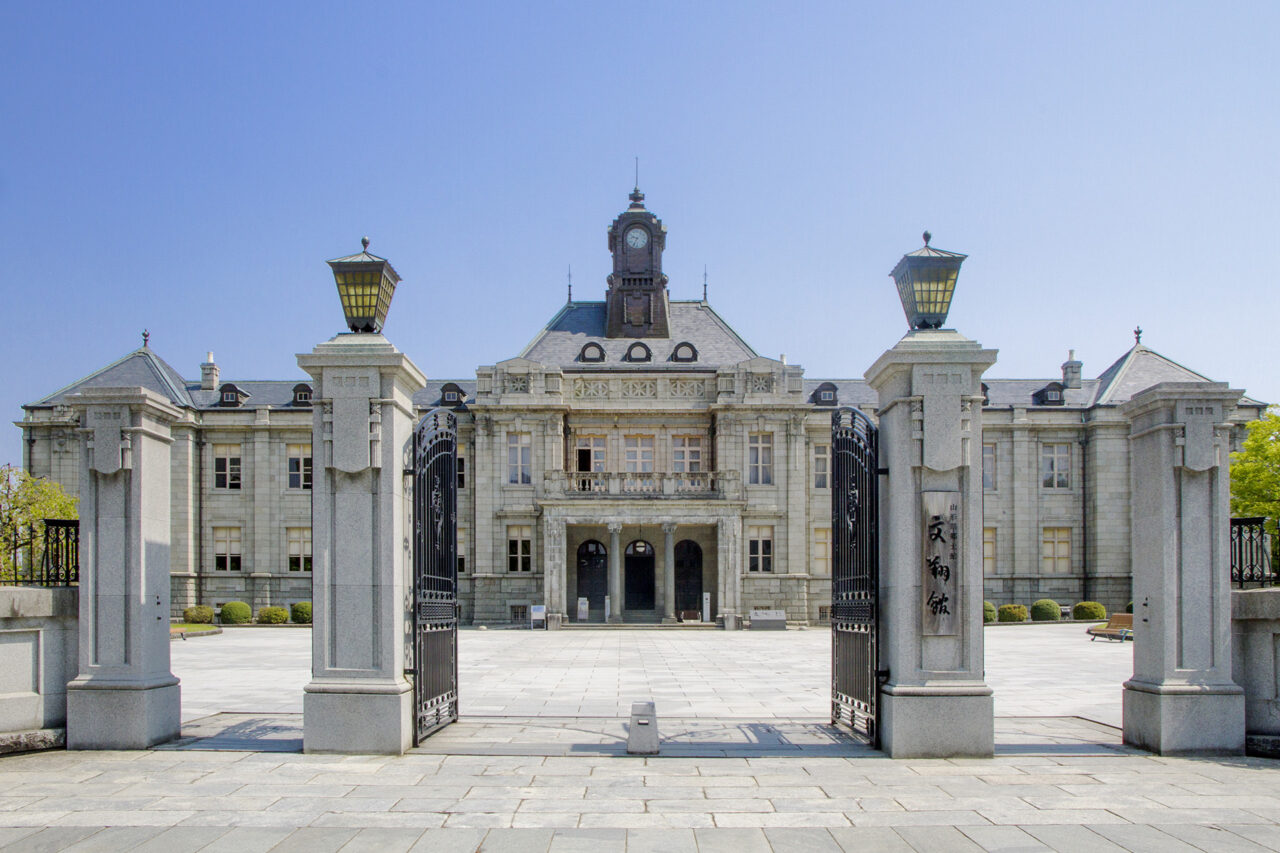
About an hour and a half before the show started, the band was rehearsing in the Gijō Hall, which had just opened. They were playing the song “i o e o.” The seating was arranged in a fan shape around a small, low stage set up in the center of the room. On the stage’s left side were Kakudo’s instruments: marimba, autoharp, a compact electric piano, and a guitar. Moving to the right, the lineup included Akita Goldman on double bass, Wataru Mitsunaga on drums and percussion, Mugi Furukawa on guitar, and Hiromiko Iwa on cello. Five column-shaped speakers stood quietly nearby, almost like shadows following the band members.
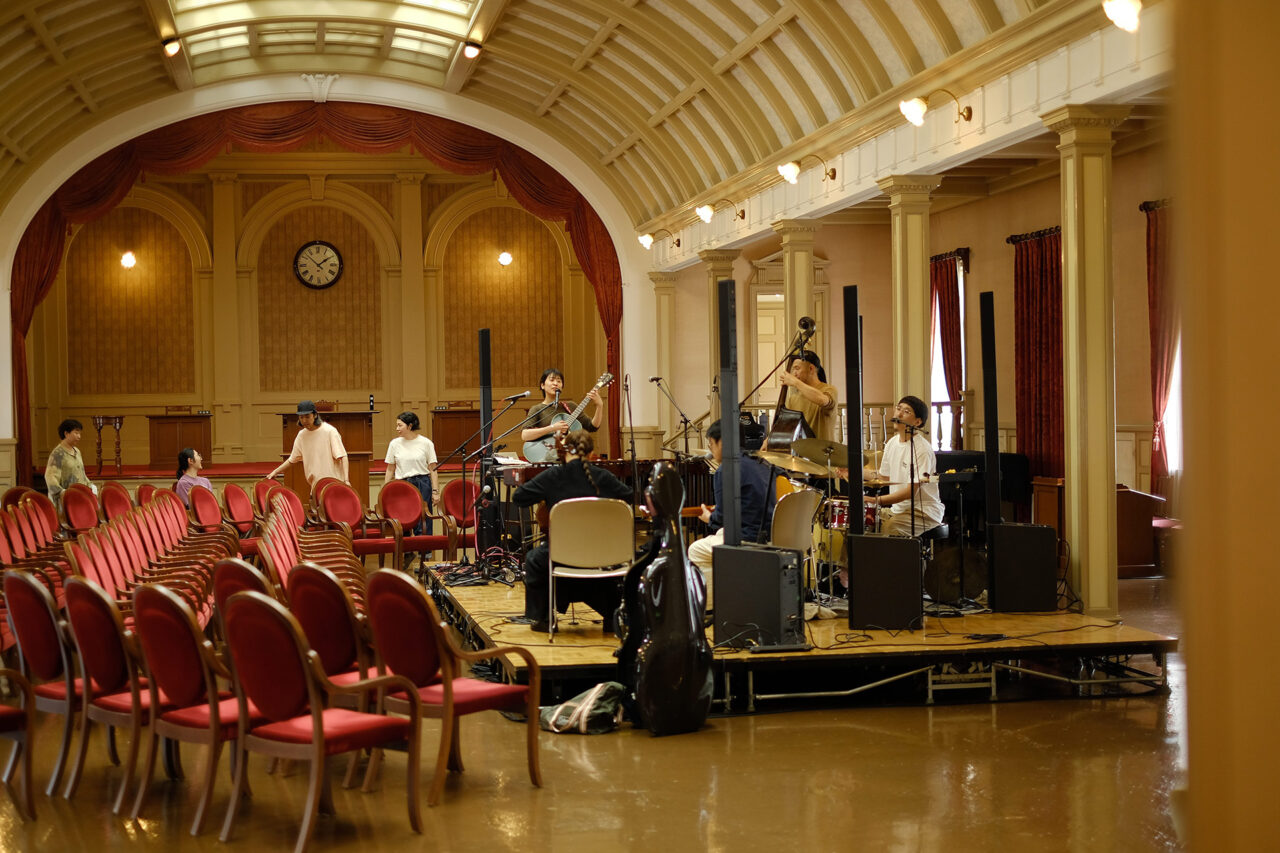
Following a friendly and easygoing rehearsal, the band members briefly left the stage. The venue then filled with the gentle sounds of flowing water and wind chimes, acting as the event’s ambient background.
INDEX
The Idea Behind Pairing a Bookbinding Workshop with the Live Show
This live show doubled as the launch of an archive book capturing the Contact album tour. Rather than showcasing a collection of completed books, the venue featured a makeshift bookbinding workshop where participants could create their own books before and after the performance.
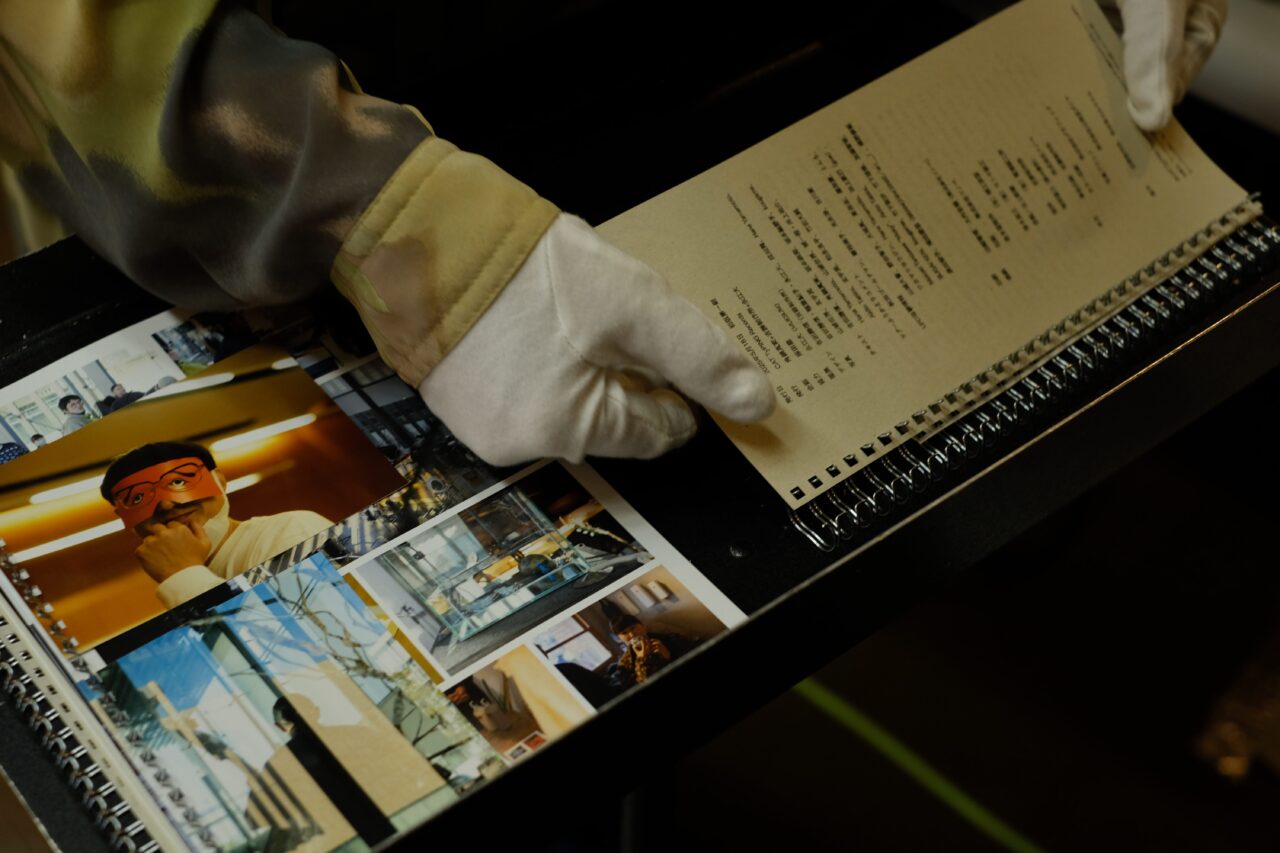
The archive book played a key role in the journey leading up to this live event. Katsunobu Yoshida of Yoshikatsu Seisakusho — the studio behind the book’s production — is a collector, designer, and printer based in Oe Town, Yamagata. Kakudo first connected with Yoshikatsu Seisakusho through a corporate prototyping project*, and decided to partner with them to create new merchandise for the Contact tour. In October 2024, she spent time at their studio in Oe Town during a production retreat to work on these goods. This collaboration with Yoshikatsu Seisakusho and the ties to Yamagata naturally evolved into the creation of the archive book, leading up to the Contact × Yamagata event.
Yoshikatsu Seisakusho participated in Kokuyo’s Yokoku Institute project called “GRASP: Prototyping a ‘Collective Research Method’,” producing the animation Digest The World: Another Organ, with sound direction and music by Kakudo.
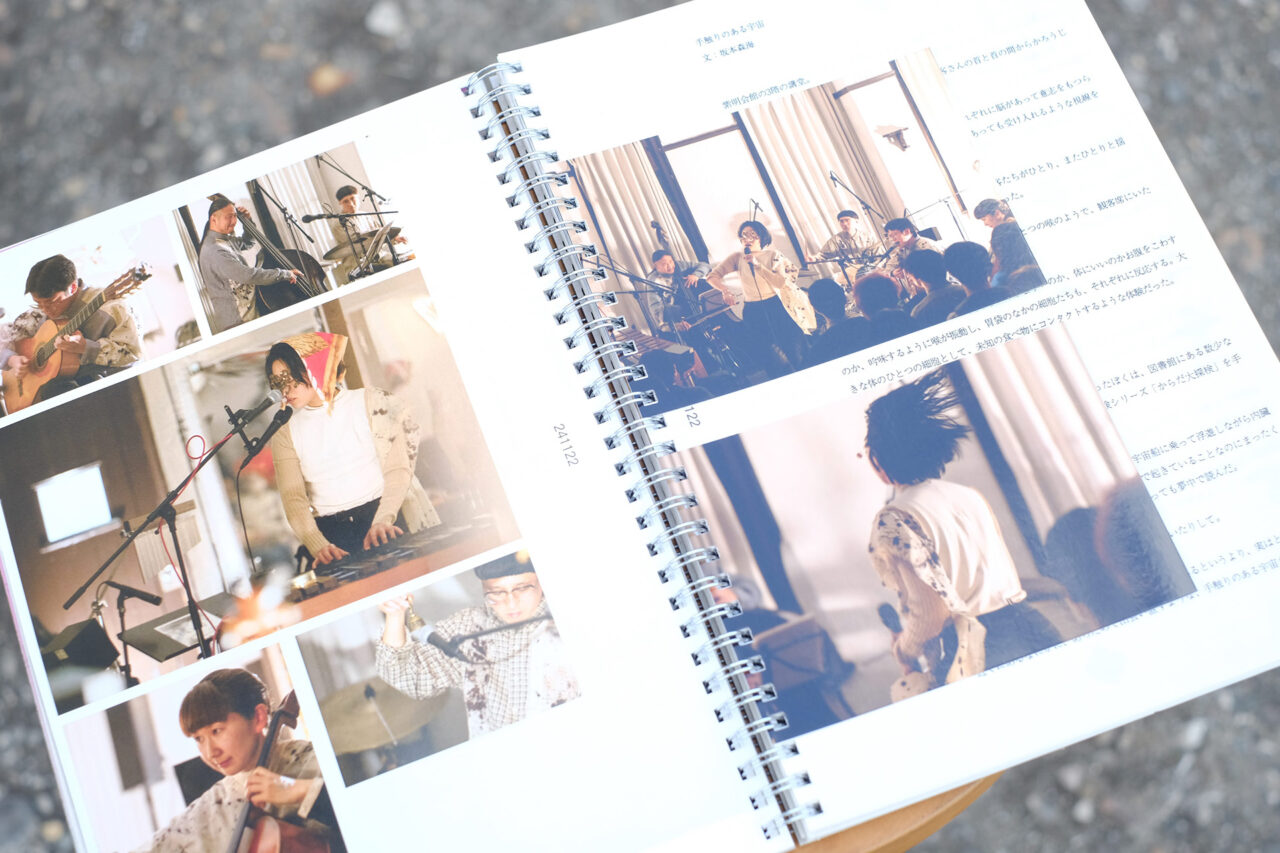
Running just a little behind schedule, the five musicians took the stage once again. The live show began with “i o e o,” the same song they had rehearsed earlier. The delicate plucking of guitar, upright bass, and cello pizzicato slowly filled the Gijō Hall, gradually immersing the space in the world of Contact.
INDEX
A Band Set Performance That Captures the Essence of “Contact”
The album Contact stands out for its intricate interplay and groove, blending vocal songs with instrumental pieces. Its rhythms often feature irregular time signatures, weaving delicate textures beneath the ethereal vocal melodies. However, in live performances, the dynamic range—from quiet moments to powerful climaxes—is even more pronounced, making the complex rhythms and polyrhythms feel more vibrant and energetic.
The track “i o e o” exemplified this expansive live expression. Following that, “Tako no Onna” made effective use of strong muted tones on cello, double bass, and guitar, creating a unique sonic atmosphere. In “theatre,” the rhythm alternates between triplets and straight beats, delivering a performance that is both danceable and charged with tension.
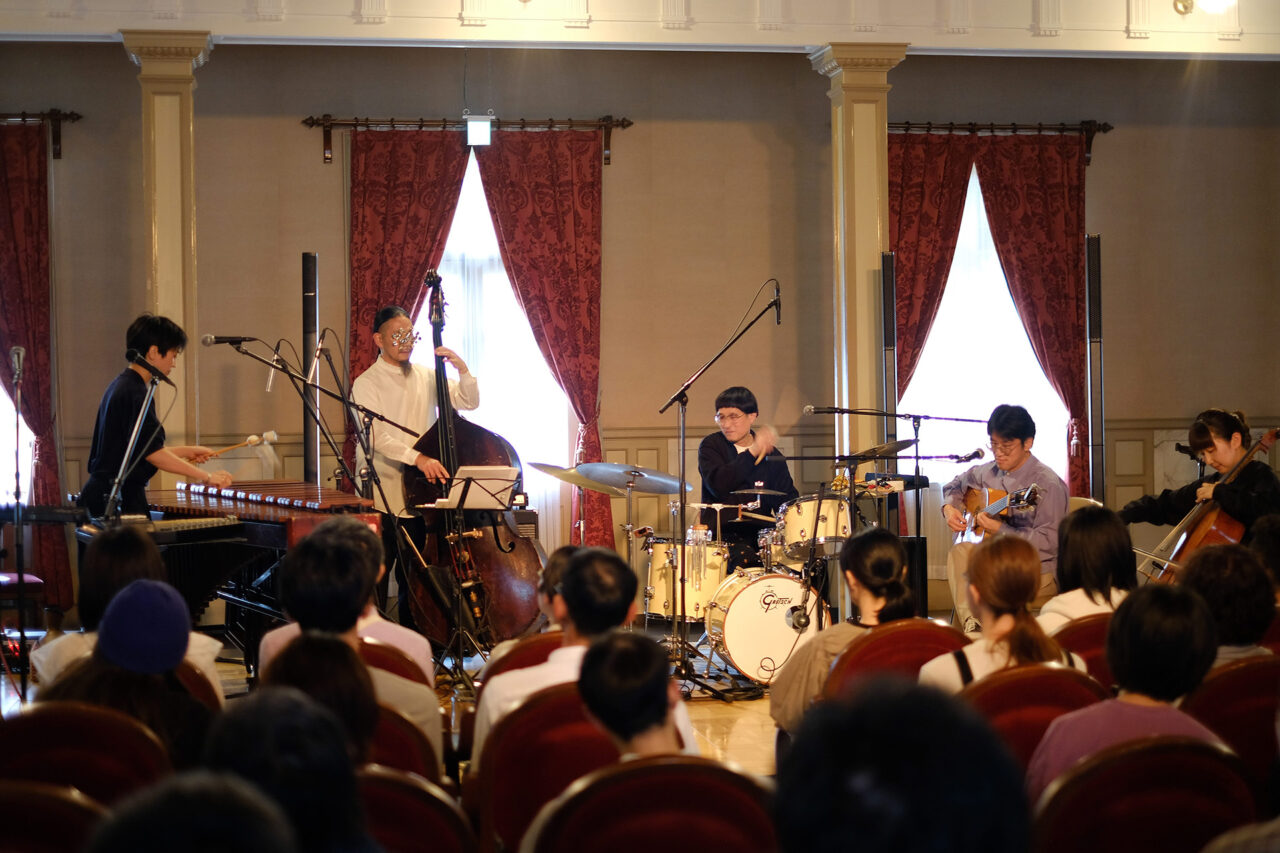
At this point, Kakudo took a moment for a short talk and break. While sharing the story behind coming to Yamagata, she also introduced the outfits worn by the entire band that day. The monochrome costumes were provided by BATONER, a knitwear brand based in Sagae City, Yamagata. Kakudo also models for BATONER’s seasonal campaigns. Alongside Yoshikatsu Seisakusho, BATONER is another connection that ties Kakudo to Yamagata.
After the talk, the band performed “November 21” from the previous album oar. Kakudo, wearing a mask that covered her eyes, stepped to the center of the stage holding a handheld mic and began to sing. They then returned to Contact with two consecutive instrumental tracks. “Flying Mountain,” with its ensemble reminiscent of progressive and post-rock, featured live dynamics that created a more dramatic expression of soft passages. “Kujira no Niwa” (“Whale’s Garden”), built on interwoven minimalistic riffs, flowed into a breathtakingly serene passage through its quiet repetitions.
Watching the performance with its diverse techniques, it became clear that most of the sounds produced were born from physical contact between the musicians and their instruments. Beyond percussion, the string players create a variety of sounds by how they press, pluck, or bow the strings. For example, when Iwa’s cello replaced its usual melodic and glossy tone with complex overtones and noise, or when Mitsunaga’s cymbals scraped like nails on a chalkboard, it was this very physical contact that shaped the space. This discovery of “contact” was unique to the band set live experience, offering something different from simply listening to the Contact album.

INDEX
When Wordless Things Tell Their Stories and the World Transforms
On the other hand, clearly operating on a different level from such physical contact is the singing. The sound of a voice, produced by vibrating one’s own throat, involves no literal physical contact. Yet, accompanied by words and melody, singing creates a different kind of contact—a sensation that connects to another time or place, offering an experience of touching something beyond the physical.
After “Kujira no Niwa,” following a brief talk, the set featured mostly vocal-centered songs except for “Rakkasei no Makura.” Tracks like “Hitobitori,” “Makura no Naka,” “Nagasaki Burabura Bushi,” “Carta de Obon,” and “Soto wa Kosame” unfolded. The soft, rich vocals transported listeners somewhere other than here—whether to childhood memories, surrealist scenes, sightseeing in Nagasaki, or the otherworldly atmosphere of Obon season.
However, the strange power of contact brought by singing was felt most deeply in the live’s highlight, “Carta de Obon,” and the final new song, “Hanashitagatteiru.” As Kakudo sang into a handheld mic, the music itself gained ebb and flow alongside her words. Her narration pointed out things as they came into view: “This speaks, that speaks…” Through these words, silent things seemed to become agents trying to communicate, as if another world were overwriting the space they occupied.
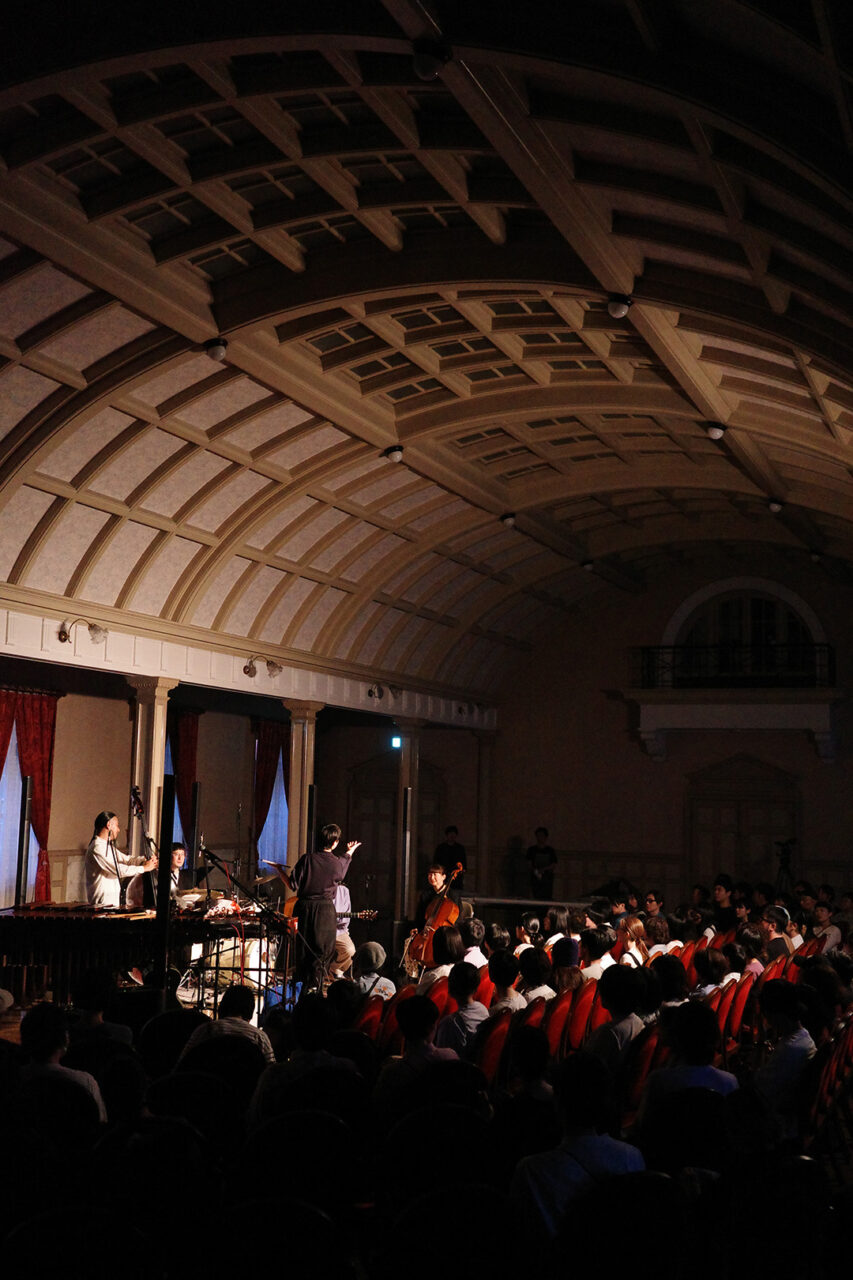
After briefly leaving the stage, the band returned for the encore with a brand-new song. Centered on Kakudo and Mugi Furukawa’s guitar and vocals, the track blended call-and-response with Steve Reich–style phase shifting. The audience was drawn into its cheerful, almost childlike energy and thrilling groove as the show came to an end.
The strong connection with Yamagata, which grew through the making of Contact tour merchandise, came to full bloom with the Contact × Yamagata live event at Bunsyōkan. It’s a relationship that I hope will continue to flourish, planting new seeds for future collaborations between Kakudo and Yamagata.
Manami Kakudo Band Set \[Contact] Yamagata Performance | Contact × Yamagata
Sunday, May 18, 2025
Venue: Yamagata Prefectural Folk Museum “Bunsyōkan” Gijō Hall
(3-4-51 Hatago-machi, Yamagata City, Yamagata Prefecture)
Doors Open: 15:00 / Show Starts: 16:30
Performers:
Manami Kakudo Band Set
Manami Kakudo (Vocals, Guitar, Marimba, etc.), Akita Goldman (Double Bass), Hiromiko Iwa (Cello), Mugi Furukawa (Guitar, Chorus, etc.), Wataru Mitsunaga (Drums, Chorus)
PA: Moky
Project: Contact × Yamagata
Production: Marina Yamaguchi (CAT TyPING Records)
Main Visual Design: Yoshikatsu Seisakusho
Public Relations & Editing: Dai Nagae
Support: Daijun Takeda (HAUS)
Organizer: CAT TyPING Records
Manami Kakudo Tour 2024 Contact Archive Book: *Contact Radio Book 2024*
Specifications: B5 size, ring-bound, 140 pages
Price: ¥12,000
Publication Date: May 18, 2025, First Edition, First Printing
Publisher: CAT TyPING Records
Project: Manami Kakudo + Yoshikatsu Seisakusho + Dai Nagae
Support: Rui Fujita
Editor: Dai Nagae (MUESUM)
Design: Katsunobu Yoshida (Yoshikatsu Seisakusho)
Photography: Katsunobu Yoshida, Ayuko Inaba, Dai Nagae, Mai Narita, Hana Yamamoto, Shikai Yamashiro, Gen Umin
Text Contributors: Katsunobu Yoshida, Manami Kakudo, Moriumi Sakamoto, Tsumino Sakamoto, kougame, Hana Yamamoto, Shikai Yamashiro, Kazuhiro Shiro & Yusuke Inoue, Akito Tabira, Gen Umin, Ryohei Matsunaga, Daijun Takeda
Tour Reflection Comments: Akita Goldman, Hiromiko Iwa, Wataru Mitsunaga, Mugi Furukawa
UFO Sightings Contributors: Daisuke Yamashiro, Tomoko Noda, Makoto Oshiro, Takeshi Azuma, Ai Takatori, Tonchi, Youjin Wakamatsu, Hana Yamamoto, Atsumi Tagami (goat), Motoki Tanizawa “Moky,” Akito Tabira, SUGAI KEN, kougame, Risa Takeshita & Masaya Takeshita, Tomoya Kato, Ikuko Harada, Airi Okada (BRANCHINCENSE/air.i___), Yasunori Kajino
Printing:
Cover
Print Management: Kosuke Ouchi (Sonobe Co., Ltd.)
Printing: Sonobe Co., Ltd.
Die Cutting Production: Seiko Nukkata (Ltd.)
Die Cutting Processing: Motoki Paper Works (Ltd.)
Sheeting & Final Trimming: Kikushin Paper Works (Ltd.)
Foil Stamping: Yoshikatsu Seisakusho
Special Cooperation (Paper Supply): Sonobe Co., Ltd.
Body
Monochrome Printing: Yoshikatsu Seisakusho
Color Printing: Graphic Co., Ltd.
Photo Printing: Hokkaido Diamond Co., Ltd.
Binding: Yoshikatsu Seisakusho and participating workshop members
© CAT TyPING Records 2025
https://manamikakudo.com/contact-radio-book








